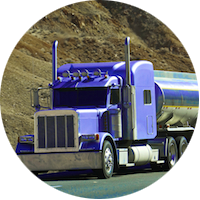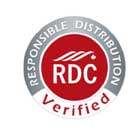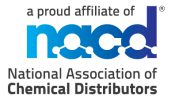Chemical Transportation, Hazmat Transportation, New FMCSA Regulations
Are You Ready for CSA 2010?
The fine art of statistical analysis has finally caught up to the trucking industry. The Federal Motor Carrier’s Safety Administration (FMCSA) is completely changing the way in which they monitor carriers for compliance.
Under the current system SAFESTAT, a carrier’s data from roadside inspections is collected. If the roadside inspections result in numerous violations, a compliance audit is scheduled and a carrier can be rated as either “Satisfactory” or “Unsatisfactory” as a result of the audit. Under the current system, it could take years to get an actual compliance audit or a follow up audit.
The FMCSA has abandoned the audit model for a statistical based model they are calling CSA 2010. It is currently being tested and is scheduled for prime-time summer 2010.
Here’s how statistical modeling works. For example, lets say you took all the factors into account that contributed to a winery producing an outstanding vintage of wine. Let’s say you had years worth of data on temperature, soil conditions, rain, sunny days, growing days, age of the vines, etc., etc. Now you take all that data and run it through a statistical regression model (This has been done by the way). You might find that of all the variables maybe there are just one or two that contribute the most to a good vintage of wine. In the case of wine, temperature, rain and number of sunny days has the greatest impact on the quality of the wine. So now that you know this, you can build a statistical model that can predict how good a particular vintage of wine is based on a few tidbits of data that are statistically significant. This is exactly what the FMCSA has done for the trucking industry. They’ve figured out the six factors that are statistically significant in predicting the crash likelihood of a particular driver or carrier. The theory is, if they can predict that a driver is highly likely to be involved in a crash in the future based on the data, they can take action to correct the driver’s behavior before it results in a crash.
The 6 Factors (BASIC’s)
Unsafe Driving BASIC—Operation of CMVs in a dangerous or careless manner. Example violations: speeding, reckless driving, improper lane change, and inattention.
Fatigued Driving BASIC—Operation of CMVs by drivers who are ill, fatigued, or in non-compliance with the hours-of-service (HOS) regulations. This BASIC includes violations of regulations surrounding the complete and accurate recording of log books as they relate to HOS requirements and the management of CMV driver fatigue. Instances related to the Fatigued Driving BASIC are distinguished from incidents where unconsciousness or an inability to react is brought about by the use of alcohol, drugs, or other controlled substances. Example violations: HOS, logbook, and operating a CMV while ill or fatigued.
Driver Fitness BASIC—Operation of CMVs by drivers who are unfit to operate a CMV due to lack of training, experience, or medical qualifications. Example violations: failure to have a valid and appropriate commercial driver’s license and being medically unqualified to operate a CMV.
Controlled Substances and Alcohol BASIC—Operation of CMVs by drivers who are impaired due to alcohol, illegal drugs, and misuse of prescription or over-the-counter medications. Example violations: use or possession of controlled substances or alcohol.
Vehicle Maintenance BASIC—CMV failure due to improper or inadequate maintenance. Example violations: brakes, lights, and other mechanical defects, and failure to make required repairs.
Improper Loading/Cargo Securement BASIC—CMV incident resulting from shifting loads, spilled or dropped cargo, and unsafe handling of hazardous materials.
How does this affect shippers?
Anyone who contracts with carriers should know that they have a legal responsibility of “due diligence”. This issue was in the courts recently and resulted in multi-million dollar settlements to accident victims who sued the person who contracted with carries who had poor safety ratings. The theory being that the person who contracted the carrier should have known they had a poor safety rating and either not contracted with them or taken actions to reduce the risk of accident. Under the current system, a carrier’s safety rating rarely changes. Checking it once a year is sufficient to show due diligence. Under the CSA 2010 the safety rating will be dynamic. It will change monthly. As a shipper if you want to avoid risk and liability for crashes that your contracted carrier might get in, you need to be on top of this and be making decisions about who you give your freight to based on SAFETY as well as COST.
Here at DSN we have an automated system that collects data directly from the FMCSA on the carries we use. If a carrier’s rating becomes unsatisfactory, we automatically prevent loads from being dispatched to the carrier. If you don’t have this technology and you use a large number of carriers, you should consider how to address this, perhaps getting a 3PL in the mix that already does this would be a good idea.












Leave a reply
You must be logged in to post a comment.